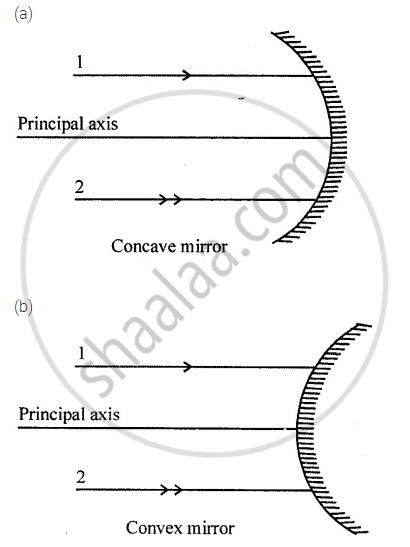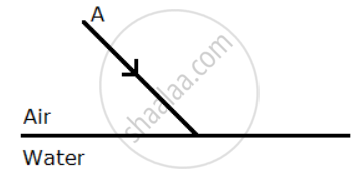Advertisements
Advertisements
Question
A ray of light strikes a plane mirror such that its angle of incidence is 30°. What angle does the reflected ray make with the mirror surface?
Solution
The reflected ray makes an angle of 60o with the mirror surface because:
angle of incidence = angle of reflection = 30o, and
angle of the reflected ray with the mirror surface = 90o - angle of reflection = 90o - 30o = 60o
APPEARS IN
RELATED QUESTIONS
State whether the following statement is true of false:
A student says that we can see an object because light from our eyes is reflected back by the object.
When a ray of light passes from air into glass, is the angle of refraction greater than or less than the angle of incidence?
A vertical ray of light strikes the horizontal surface of some water:
What is the angle of refraction?
How does the light have to enter the glass:
for no refraction to happen?
When a ray of light travels from air to glass, it bends .......... the normal.
The diagram (figure) given below shows two parallel rays 1 and 2 incident on (a) a concave mirror, (b) a convex mirror. Draw the reflected rays and mark the focus by the symbol F.

A ray of light A incident from air suffers partial reflection and refraction at the boundary of water.

- Complete the diagram showing (i) the reflected ray B and (ii) the refracted ray C.
- How are the angles of incidence i and refraction r related?
Choose the correct option from given alternative:
A real image is formed by the light rays after reflection or refraction when they:
(A) actually meet or intersect with each other.
(B) actually converge at a point
(C) appear to meet when they are produced in the backward direction.
(D) appear to diverge from a point.
Which of the above statements are correct?
The speed of light varies in different media.
Which is optically denser out of the two medium M1& M2 having the refractive indices = 1.71 and 1.36 respectively?
